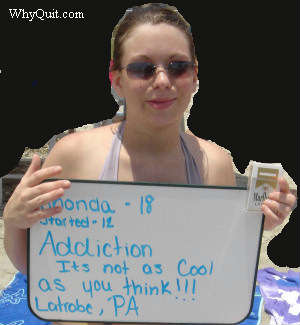
This chapter provides a brief recovery overview. It's a start to finish look at four distinct yet overlapping recovery phases, followed by a list of health benefits bestowed by navigating them. It lays a foundation and framework for the four chapters which follow:
Chapter 9: Physical Recovery
Chapter 10: Emotional Recovery
Chapter 11: Subconscious Recovery
Chapter 12: Conscious Recovery
As detailed in Chapter 1, nicotine addiction resulted from the introduction of a chemical into our body, a chemical which by happenstance was able to unlock and activate the same brain cells and pathways as the neurotransmitter acetylcholine.[1] Through cascading, scores of neurochemicals were released, most notably dopamine and adrenaline.
For us, nicotine's repeated activation of those receptors caused stimulation and permanent compromise of the brain's dopamine pathways, our mind's priorities teacher.
The brain's dopamine pathways were designed to foster urges, wanting and desire, so as to make events which stimulate them (species survival activities) extremely difficult to forget or ignore. But reflect on the fact that prior to nicotine dependency onset, there was no "wanting" or "urge" to use again.
Initially, arriving nicotine triggered the release of a burst of unearned dopamine. It provided wanting satisfaction for wanting that didn't yet exist. For those susceptible to dependency onset, continued use would soon bring an end to consequence-less stealing of adrenaline-amped satisfaction.
Our nicotine activated priorities teacher started seeing and treating nicotine as if food. At some point, our brain's tonic dopamine level started declining in response to falling blood nicotine levels. This, in turn, activated wanting, desire, and anxiety for more. That wanting was soon being reinforced by an ever-increasing number of old wanting satisfaction memories.
Each of those high-definition memories documented exactly how wanting was satisfied, by the arrival of a new supply of nicotine. Arrival would generate a sudden phasic burst of dopamine, temporarily restoring our tonic dopamine level and temporarily satisfying wanting.
Although still poorly understood, continued use caused our brain to attempt to desensitize itself to nicotine's presence by increasing the number of acetylcholine receptors in multiple brain regions. Continued use also conditioned our subconscious to expect a new supply of nicotine when specific times, locations, people, activities, or emotions were encountered.
Now, any attempt to stop using nicotine would result in the same wanting related anxieties felt when deprived of food or water.
Declining by roughly half every two hours, years of struggling to keep enough nicotine in our bloodstream, so as to hold wanting at bay, left us falsely convinced that nicotine was core to our existence, as fundamental as eating. Educated recovery is about understanding both the lies we lived and our dependency's effects upon us.
As if starving yourself to death, nicotine's above feeding cycle has deeply conditioned you to dread life without it, to fear coming home. It's my hope that dependency understanding fosters growing awareness of the reality that recovery is 100% healing, that it's good, beautiful, and wonderful not bad.
Will big picture awareness aid in helping calm dependency induced fears of life without using? Will diminishing needless anxieties make it easier to notice, focus upon and savor the long-forgotten joys that recovery is about to gradually unfold before you?
It's my hope that understanding aids in appreciating the awe and glory of arriving here on Easy Street, of experiencing an uninterrupted calm that was long ago smothered by an ever-growing pile of anxiety satisfaction memories.
But turning fear into desire, that's my wish for you, not yours. Once home, whether your journey is best characterized as having been a lovefest, a cakewalk, non-event, frantic, or a nightmare, the only thing that matters is that each day remained and remains totally do-able.
Understanding where we now stand is the window to where we've been. An opportunity to awaken is at hand.
As you continue reading, will nicotine-induced beliefs remain open to the possibility that emerging after years of being buried by earthquake rubble is to be celebrated not feared? Will it willingly review years of junkie thinking, the depths to which those years of lies took you, and where truth stands?
While such awareness itself can be a tad frightening, why spoil healing with fear? Why fear the arrival of a calm and comfortable day where thoughts of using never once enter your mind? Why fear such days soon becoming your new sense of normal?
References
All rights reserved
Published in the USA
